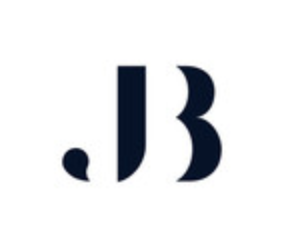Written by: Brenna Johnson
ISO 30414 Human Capital Internal and External Reporting standard was published in 2019 and offers a new era for HR managers and to help both their organization and their stakeholders identify relevant information for more effective business management and disclose to interested parties. In this article, we will detail these four ISO standards and the areas covered.
ISO Standard and Companion Documentation for HR
ISO 30414, Human Resource Management – Guidelines for internal and external human capital reporting: The guidelines for internal and external human capital reporting. Companies are expected to report on 23 core metrics with the goal to increase transparency around an organization’s human capital contributions.
Below we have highlighted some relevant companion documentation available to help organizations understand terminology and help with requirements:
- ISO 30400, Human Resource Management – Terminology: breaks down the fundamental terms used in the HRM (Human Resource Management) Standards.
- ISO 30409, Human Resource Management Workforce Planning: helps organizations plan and adjust their staffing protocols.
- ISO 30408, Human Resource Management – Guidelines on human governance: provides the necessary guidelines for establishing human governance system.
- ISO/TS 24179, Human resource management – Occupational health and safety metrics: The first in a large series of technical specifications and guidance documents to provide comparable measures for internal and external reporting in human resource management. Specifically relates to occupational health and safety data and highlights issues that should be considered with interpreting it such as lost time from work-related injuries, accidents, etc., and the rate of people who have undertaken training on OH&S and shows comparisons over time for target tracking.
Areas Covered In ISO 30414
The ISO standards provide guidelines on the following core Human Capital Reporting areas:
- Costs
- Leadership
- Organizational culture
- Workforce evaluation
- Productivity
- Recruitment
- Turnover
- Diversity
- Workforce availability
- Skills and capability
Note: ISO 30414 is a guidance standard; meaning organizations cannot become certified to it. If you are looking for certification to a related standard, ISO 45001:2018 Occupational Health & Safety might be of consideration.
Why HR Should Go Above And Beyond ISO 30414
Every Industry Is Different
As with most ISO standards, ISO 30414 is generic in nature and not specifically tailored for health, agriculture, or banking industries. This means that it is easily applicable to any industry and decided to allow organizations to tailor each requirement to how they best run their business. For best results, an HR manager should have autonomy within their scope of work to achieve the requirements of the standard in a manner that serves the needs of their industry and their people. Without applying insight into your company’s best practices and the functionality of the work, strict compliance with these guidelines can lead to unexpected losses or resistance from the organization. There is no “one cap fits all” model in business, and the same should be considered for the application of an ISO Standard.
Maximizing Productivity and Profits
If the goal of your business is to maximize profits and productivity; ISO Standards are designed to help you achieve this.
ISO Standards help organizations do this by reducing inefficiencies in processes and procedures. When everyone knows what they are doing, it saves time and energy and increases productivity. By doing so, companies often see an increase in profitability and employee satisfaction.
Results May Not Meet Expectations
While effective implantation of ISO Standards often increases profits and productivity through efficient processes and procedures; results may vary. It’s up to the HR leaders and top management to go the extra mile. Without support and effort from management to meet and maintain the requirements of the standard, maintaining an effective ISO 30414 management system will not be possible.
The People Factor
The HR department first and foremost deals with people – the company’s workforce, who have the most significant impact on the company or organization’s performance. If ISO guidelines are followed without amendments or improvements to how the workers’ function, it is the workers who suffer for it.
Reports Aren’t Everything
If reports and reporting are taken too seriously, and other vital areas like working conditions are overlooked, workers will be badly affected, and productivity may decline. HR leaders should be strategic, considering that they’re dealing with people who have feelings before implementing standards. If the standards produce unfavourable results, they should be quick to switch to a more suitable business model.
ISO 30414 gives a clear set of guidelines for evaluating and reporting human capital. While this is convenient for monitoring productivity. However, reporting doesn’t necessarily make workers more productive; rather, it’s a strategy used to organize and mobilize them.
In addition to a sound reporting system, there should be a sound people strategy/relationship. HR managers go beyond the reporting requirements to build the right system for people analytics, partnerships, and a culture that helps the company achieve its goal. Workforce data should be carefully analyzed to make for better working relationships, not just for employee retention, but for employee satisfaction. In short, advanced data analysis is far more powerful than reporting for business transformation.
Summary
ISO 30414 serves as a guideline for effective human capital reporting and paired with the companion documentation, it’s an extremely helpful resource for HR managers. For an organization to stay top of its class, continuous improvements are vital. Implementation of these guideline standards could mean the difference between hiring the best in the industry or increasing market share due to increased consumer satisfaction from your productivity. And because ISO 30414 is generic in nature, any organization can benefit from it. Everyone wants to increase productivity and profits, what will distinguish a particular company from others is whether or not they can go beyond these standards to create advanced policies of their own. Help set yourself apart from the rest, and go above and beyond the call of duty for HR.
About the Author:
Brenna Johnson is an HR professional based in New York, with a passion for technology and modernizing our industry. Brenna helps shape selectsoftwarereviews.com as senior editor, providing expert advice on the best HR and recruiting software.






 Jorine Bibi is an environmental blogger. She hopes that her articles provide her readers with information on what the world can do to reduce its energy use. She also believes that if we don’t address the issue of climate change soon it will be too late. In her free time, she likes to tend to her garden.
Jorine Bibi is an environmental blogger. She hopes that her articles provide her readers with information on what the world can do to reduce its energy use. She also believes that if we don’t address the issue of climate change soon it will be too late. In her free time, she likes to tend to her garden.






 Abroo Murtaza is the one enthusiastic and passionate writer who love to write about traveling based on the interest of exploring new places, reading about them and then delivering the knowledge through her pen. Moreover, Abroo is also fond of writing about technology trends, gadgets like latest, mobiles, cameras etc. She thus strives to provide accurate information and knowledge in respective areas of interest and educate people on real terms.
Abroo Murtaza is the one enthusiastic and passionate writer who love to write about traveling based on the interest of exploring new places, reading about them and then delivering the knowledge through her pen. Moreover, Abroo is also fond of writing about technology trends, gadgets like latest, mobiles, cameras etc. She thus strives to provide accurate information and knowledge in respective areas of interest and educate people on real terms.